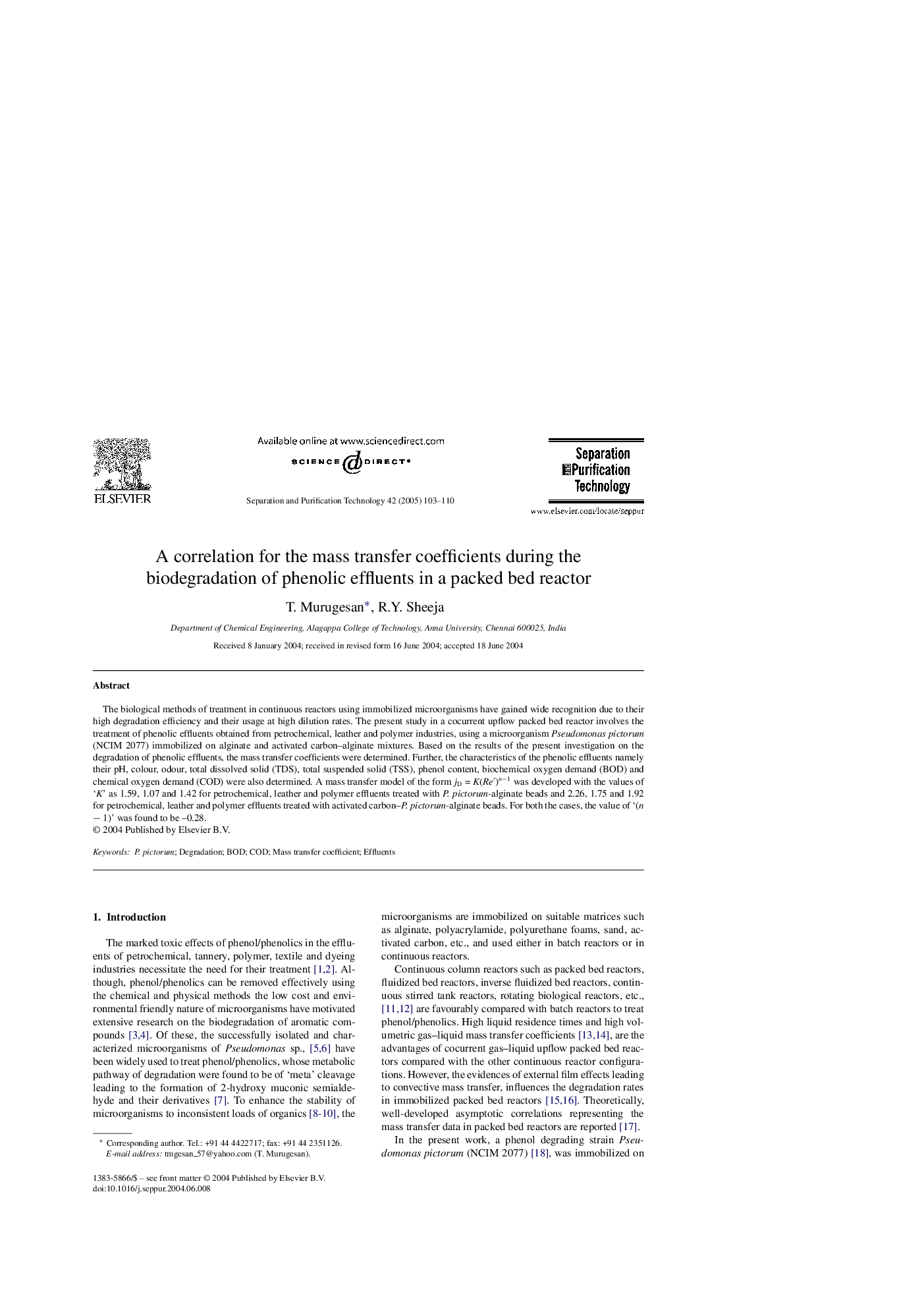| Article ID | Journal | Published Year | Pages | File Type |
|---|---|---|---|---|
| 10389864 | Separation and Purification Technology | 2005 | 8 Pages |
Abstract
The biological methods of treatment in continuous reactors using immobilized microorganisms have gained wide recognition due to their high degradation efficiency and their usage at high dilution rates. The present study in a cocurrent upflow packed bed reactor involves the treatment of phenolic effluents obtained from petrochemical, leather and polymer industries, using a microorganism Pseudomonas pictorum (NCIM 2077) immobilized on alginate and activated carbon-alginate mixtures. Based on the results of the present investigation on the degradation of phenolic effluents, the mass transfer coefficients were determined. Further, the characteristics of the phenolic effluents namely their pH, colour, odour, total dissolved solid (TDS), total suspended solid (TSS), phenol content, biochemical oxygen demand (BOD) and chemical oxygen demand (COD) were also determined. A mass transfer model of the form jD = K(Reâ²)nâ1 was developed with the values of 'K' as 1.59, 1.07 and 1.42 for petrochemical, leather and polymer effluents treated with P. pictorum-alginate beads and 2.26, 1.75 and 1.92 for petrochemical, leather and polymer effluents treated with activated carbon-P. pictorum-alginate beads. For both the cases, the value of '(n â 1)' was found to be -0.28.
Related Topics
Physical Sciences and Engineering
Chemical Engineering
Filtration and Separation
Authors
T. Murugesan, R.Y. Sheeja,
